A six-move bodyweight workout for beginners
Stick to this beginner's routine for at least eight weeks and you'll see significant improvements in your full-body strength
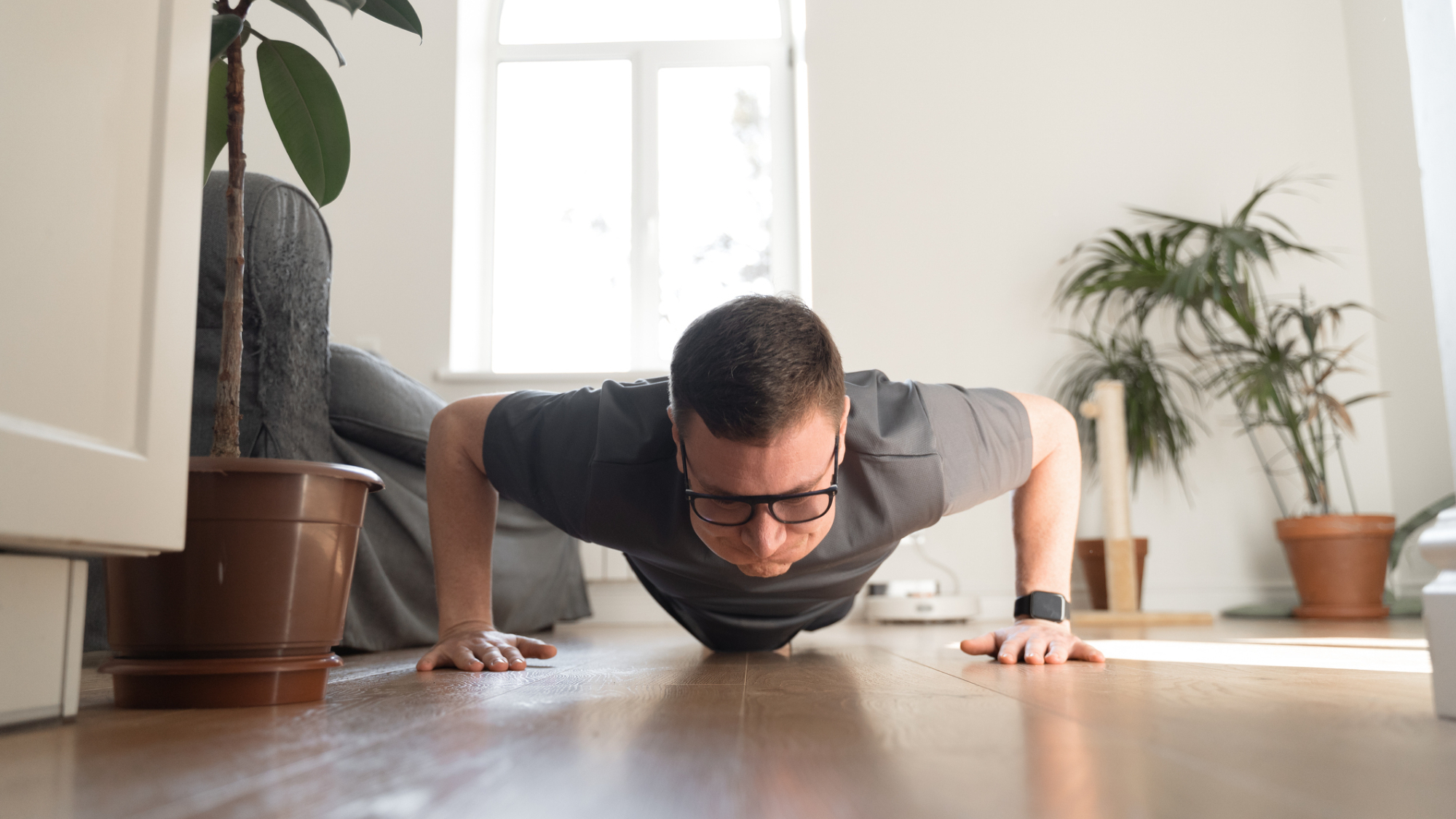
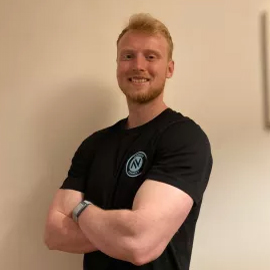
One of the hardest things about starting to exercise is knowing where to begin. Fortunately for you, Fit&Well is here to help.
This simple workout plan is perfect for beginners, with easy exercises that can be performed with dumbbells, kettlebells or even household objects like a couple of filled water bottles.
It has been designed by strength coach and Trainer Academy expert Domenic Angelino (MS, CSCS, CPT), who recommends repeating it up to three times per week on non-consecutive days.
"The most important thing when working out as a newcomer is to figure out what you can stick to," Angelino tells Fit&Well. "Focus on workouts that feel maintainable for you, rather than ones that are very difficult or rigid.
"Ultimately, you’ll be in a much better spot one year from now if you find a manageable workout you can stick with, rather than an overly challenging workout that you’ll give up on in one month."

Domenic Angelino is a certified personal trainer and strength and conditioning coach. He holds a master’s degree in kinesiology, as well as further fitness qualifications from the American Council of Exercise and National Strength and Conditioning Association. He has been involved with several research projects, written a textbook on fitness and nutrition for a school system and worked with fitness apps, fitness influencers, athletes and educational institutions as an expert consultant.
How to do Domenic Angelino's full-body home workout
Perform the exercises below for the prescribed number of sets and repetitions (reps). This workout is designed to build full-body strength and muscle, so you should rest for 60 to 90 seconds between sets to allow your muscles to recover slightly. This way, you can hit each set with renewed intensity.
1. Goblet squat
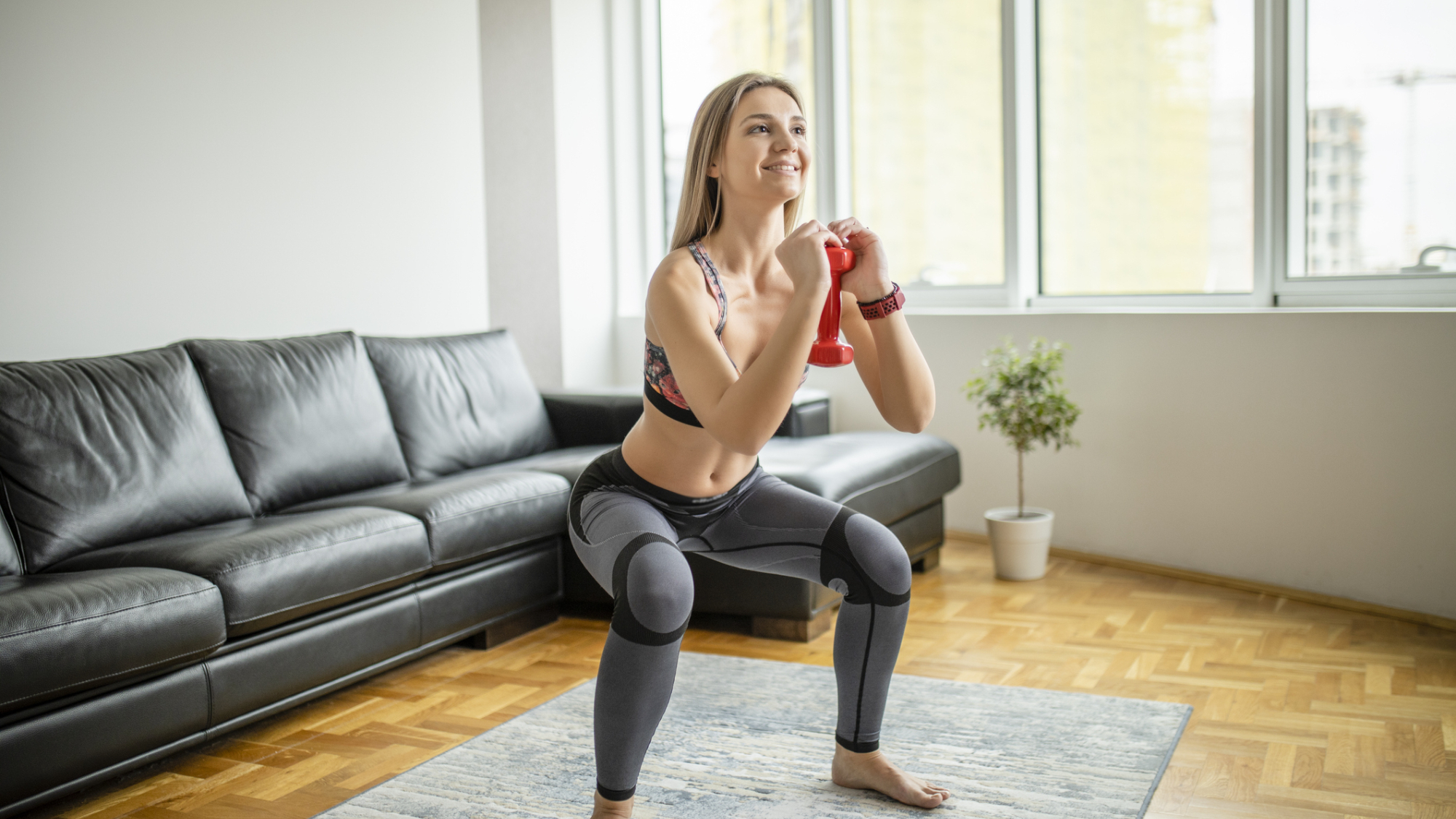
Reps: 8 - 10 Sets: 3
Get the Fit&Well Newsletter
Start your week with achievable workout ideas, health tips and wellbeing advice in your inbox.
Stand with your feet a little beyond hip-width apart and your toes pointed slightly outwards. Hold a weight in both hands in front of your chest, then push your hips back and bend your knees to lower yourself towards the floor.
Keep a straight spine throughout and try to keep your chest facing forward rather than letting it drop. Continue to lower your hips until your thighs are parallel with the ground, then drive through your feet to return to a standing position. That's one repetition.
"This exercise can be performed with household objects, a dumbbell or a kettlebell, provided whatever you use is held in a safe and stable manner at chest level," Angelino says. "If no suitable objects are available, feel free to do this with just your bodyweight, clasping your hands in front of your chest."
Want to perfect your form? Read through our in-depth piece on how to squat correctly.
2. Lunge
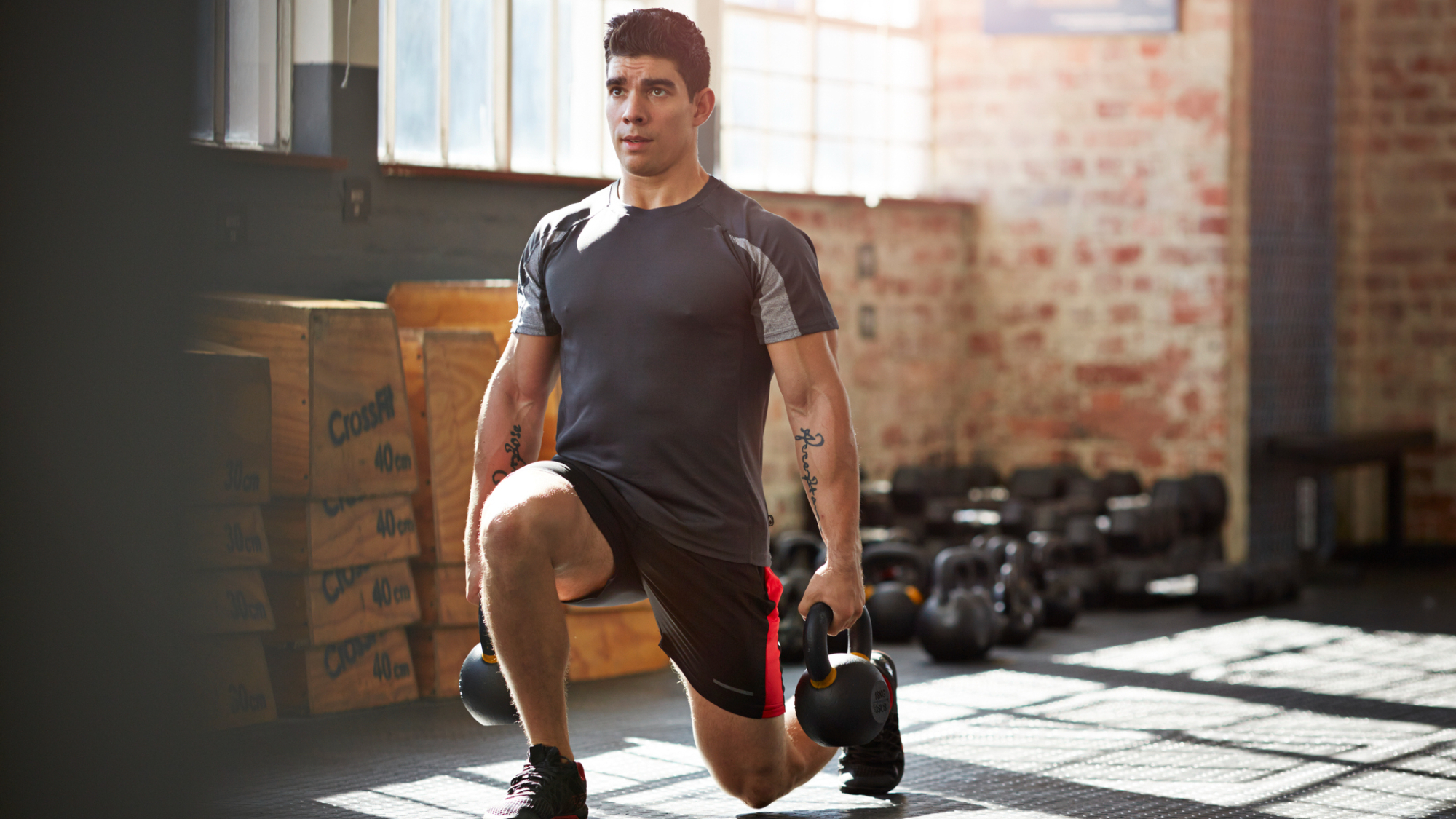
Reps: 8-10 Sets: 3
"Hold dumbbells, kettlebells or household objects of equal weight (such as sealed and full water jugs) in each hand, or do this with just your bodyweight," Angelino says.
Stand upright then step your right foot forward and drop your left knee towards the floor until both knees form a right angle. Push through your right foot to return to standing, then repeat on the other leg.
If maintaining your balance is a struggle, Angelino suggests performing lunges next to a wall or other stable object you can hold onto.
3. Push-up
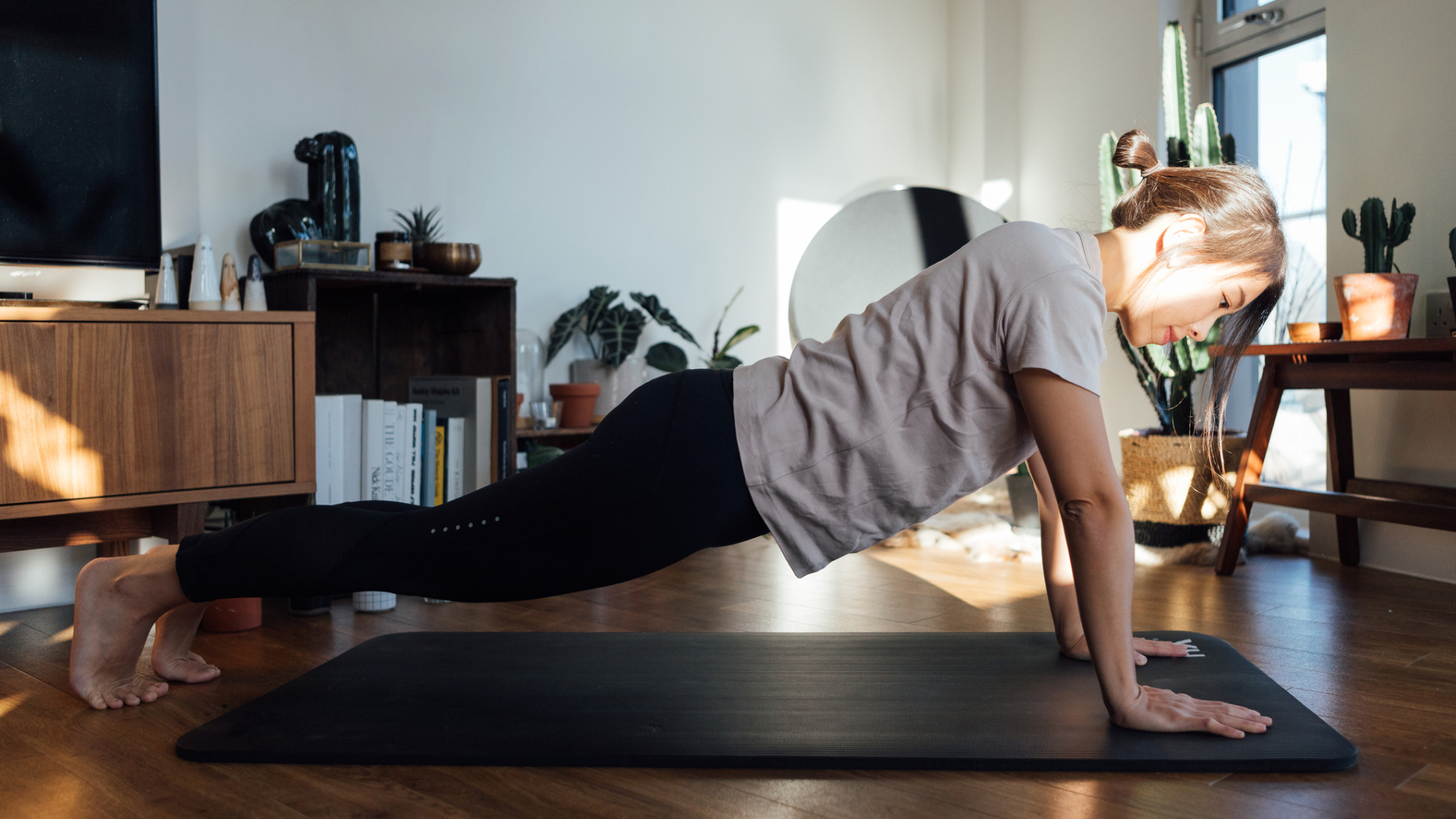
Reps: 8-10 Sets: 3
Start in a high plank position with your hands and feet in contact with the ground. Your arms should be straight, and the back of your head, neck, spine and legs should form a straight line.
Keeping your elbows tucked into your sides, bend your elbows to lower your chest until it's less than an inch off the floor, then push through your hands to return to the starting position.
If this is too tricky, Angelino recommends choosing a variation to suit your strength level. To make the move easier, you could try dropping your knees, placing your hands on an elevated surface like a chair, or performing push-ups against a wall. You can find more tips and adaptations in our guide on how to do a push-up.
4. Floor Y raise
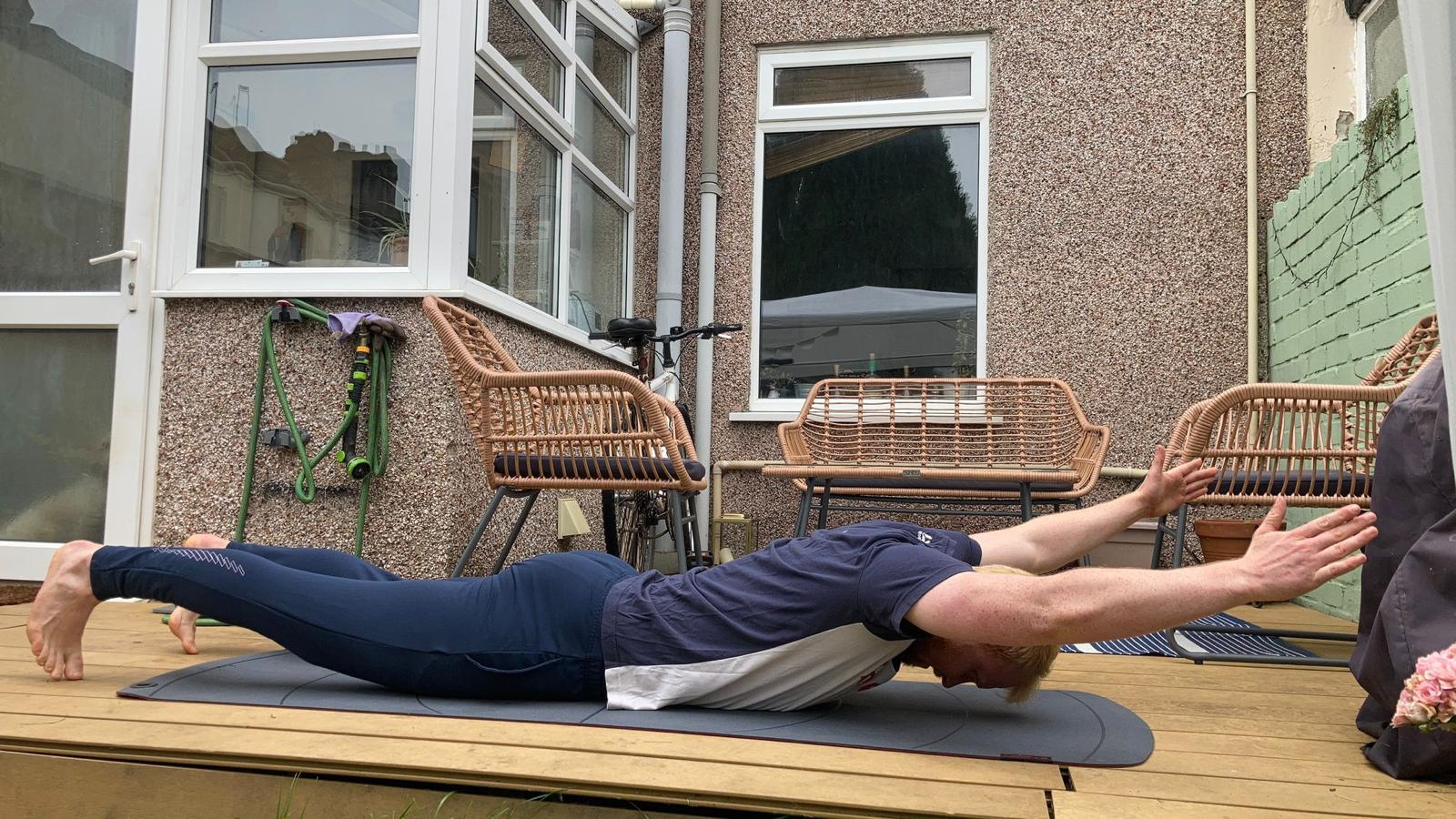
Reps: 10-12 Sets: 3
Lie face down on the floor with your legs fully extended and your arms straight out in front of you to form a Y-shape. Keeping your arms straight, raise them a few inches off the floor, then lower them again.
"Try to hold each rep for at least two seconds before lowering your arms," says Angelino.
5. Lying leg raise
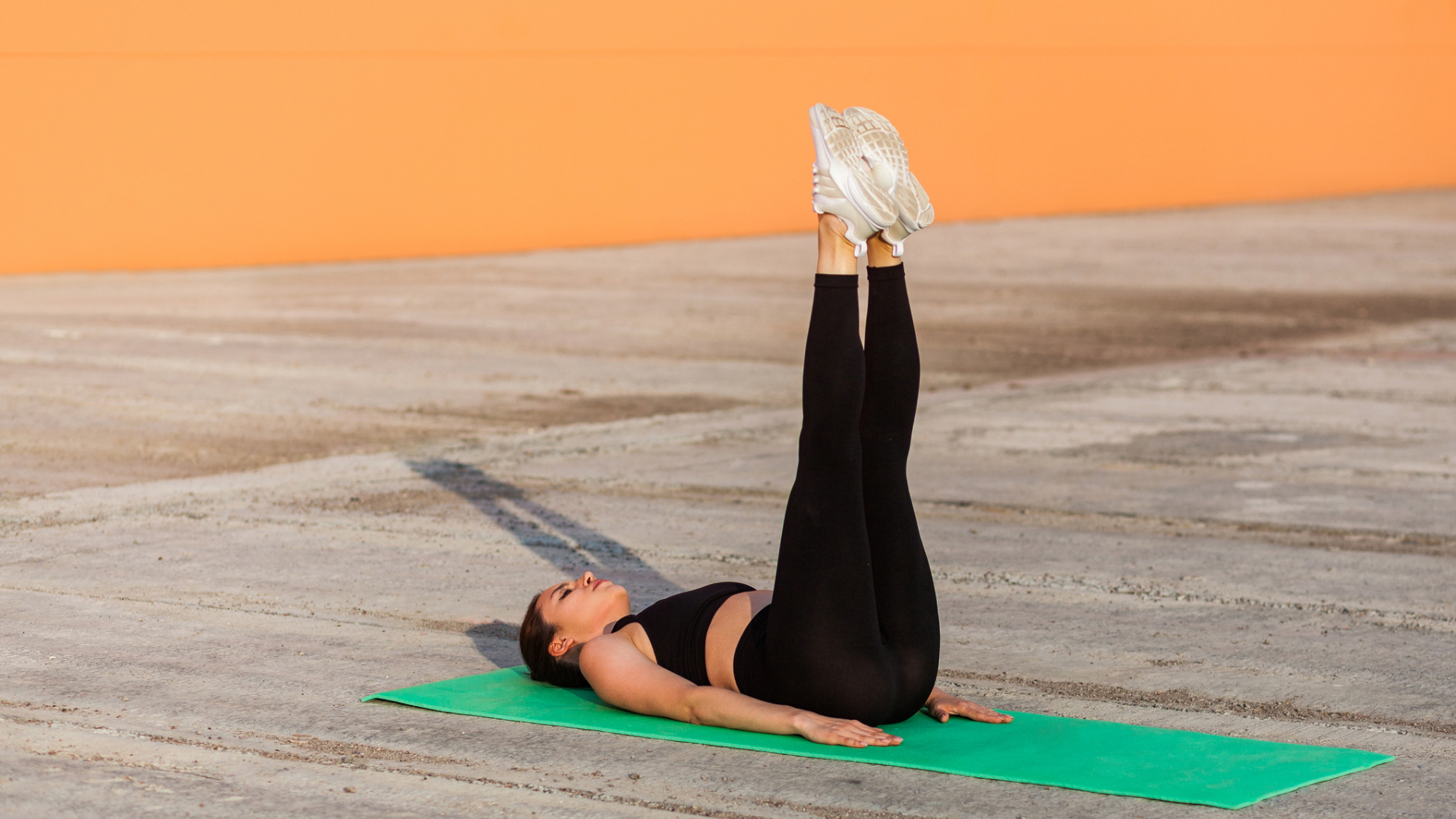
Reps: 10-12 Sets: 3
Lie flat on your back with your arms by your side and your legs extended. Keeping your legs straight, lift them up until they form a right angle with your torso, then control them back to the ground.
Angelino's top tip: "Try to keep your back and head firmly on the floor as you raise your legs."
For an easier variation, you can also bend your legs and bring your knees towards your chest.
6. Plank
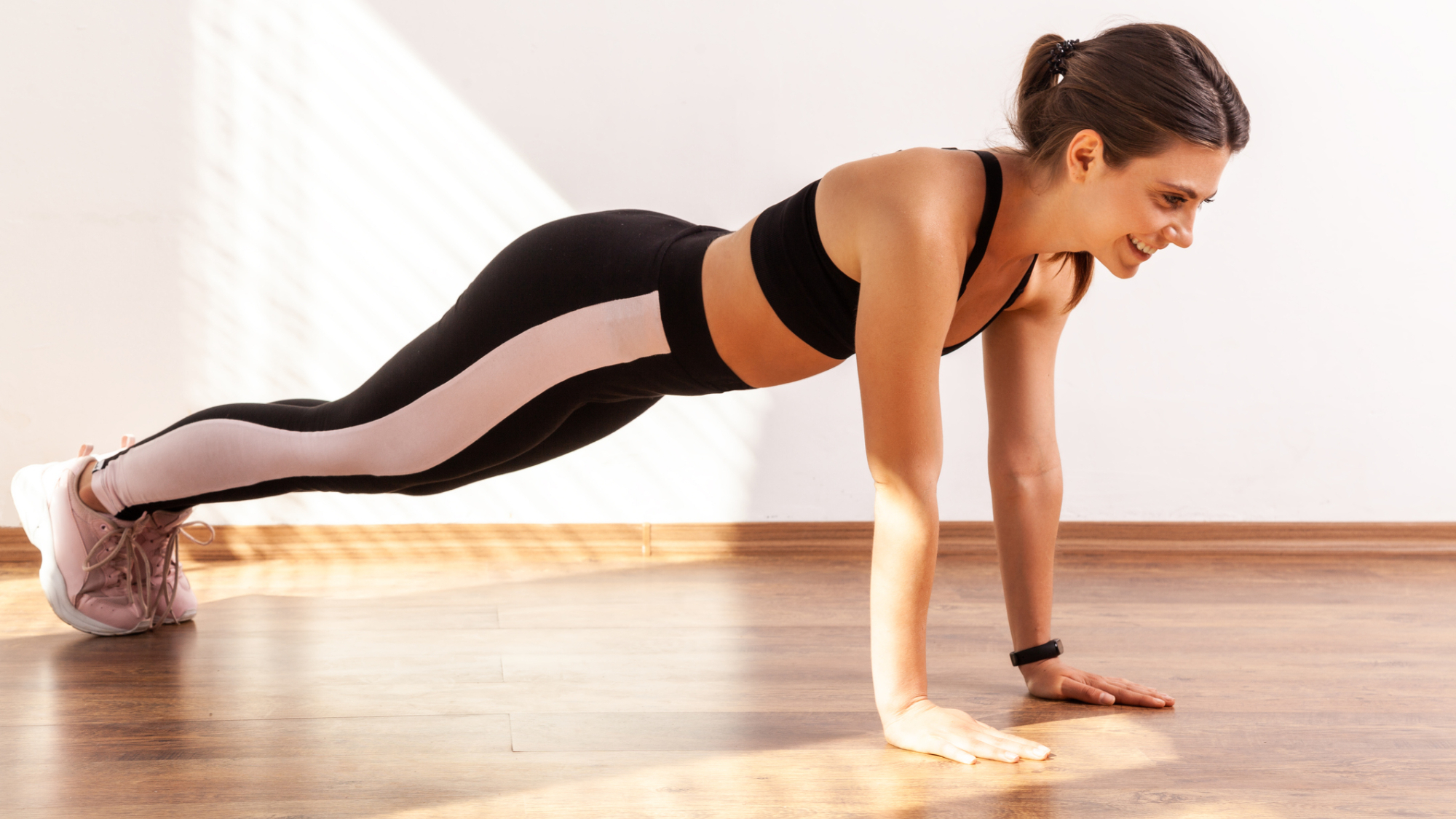
Sets: 3 Time: 15-45 seconds
Assume a high plank position with your arms straight and your hands directly underneath your shoulders. Only your hands and feet should be in contact with the ground, and the back of your head, spine and legs should form a straight line.
"Exhale deeply and tighten your abdomen muscles as you begin this exercise," says Angelino.
"Feel free to breathe normally after starting, but do your best to maintain tension in your abdomen throughout the movement. This will increase the effectiveness of the exercise for training important stabilizer muscles in your abdomen."
Benefits of this workout
If you're new to strength-boosting workouts like this one, your training needs will be very different to someone who has been lifting weights for years. Believe it or not, this actually gives you a sizable advantage over seasoned lifters.
"Your body will be very susceptible to responding to exercise when you’re first getting started," explains Angelino. "The more advanced and well trained you become, the less susceptible your body is.
"This means that, when you start out, your training has a lot of leeway. An elite athlete may need to perform meticulously designed long-duration, frequent and demanding workouts consistently in order to make progress.
"But, someone with less than six months of recent and consistent gym experience doesn’t require this to progress effectively."
This is why Angelino points first-time trainers towards home workouts. They're more accessible, easier to commit to and still capable of helping you build strength and muscle.
Why should beginners choose full-body workouts?
For those just starting out, full-body workouts are efficient and effective. Beginners can usually achieve the stimulus they need to build muscle with fewer exercises than advanced athletes, so one or two moves per body part should be plenty, Angelino says.
"The other nice thing about a full body routine when you’re starting out is that it enables you to pass that threshold pretty frequently.
"Since you train most muscles during most workouts, if you train three times per week this means your body is given a reason to build muscle three times per week, which is a lot."
How to use this workout as part of a longer exercise plan
You can repeat this workout multiple times per week to get to grips with strength training.
"If you want to ease into things, I recommend performing this workout once on your first week, twice on weeks two and three, and three times on week four and beyond. Try to stick to this routine for at least eight to 12 weeks," says Angelino.
After a few weeks you'll have to make a few tweaks if you want to continue to build muscle, by increasing your weight or upping the number of repetitions you do (this is known as progressive overload).
This is where a set of adjustable dumbbells comes in handy. The best adjustable dumbbells have weight options from 5lb to 55lb, as well as many increments between so you can switch the weight to suit your strength level for each exercise.

Harry Bullmore is a Fitness Writer for Fit&Well and its sister site Coach, covering accessible home workouts, strength training session, and yoga routines. He joined the team from Hearst, where he reviewed products for Men's Health, Women's Health, and Runner's World. He is passionate about the physical and mental benefits of exercise, and splits his time between weightlifting, CrossFit, and gymnastics, which he does to build strength, boost his wellbeing, and have fun.
Harry is a NCTJ-qualified journalist, and has written for Vice, Learning Disability Today, and The Argus, where he was a crime, politics, and sports reporter for several UK regional and national newspapers.
-
 I do these two things every day to stay fit and healthy, says the newest star trainer on Chris Hemsworth's fitness app
I do these two things every day to stay fit and healthy, says the newest star trainer on Chris Hemsworth's fitness appHere's how Centr's Korey Rowe trains for longevity
By Sam Rider Published
-
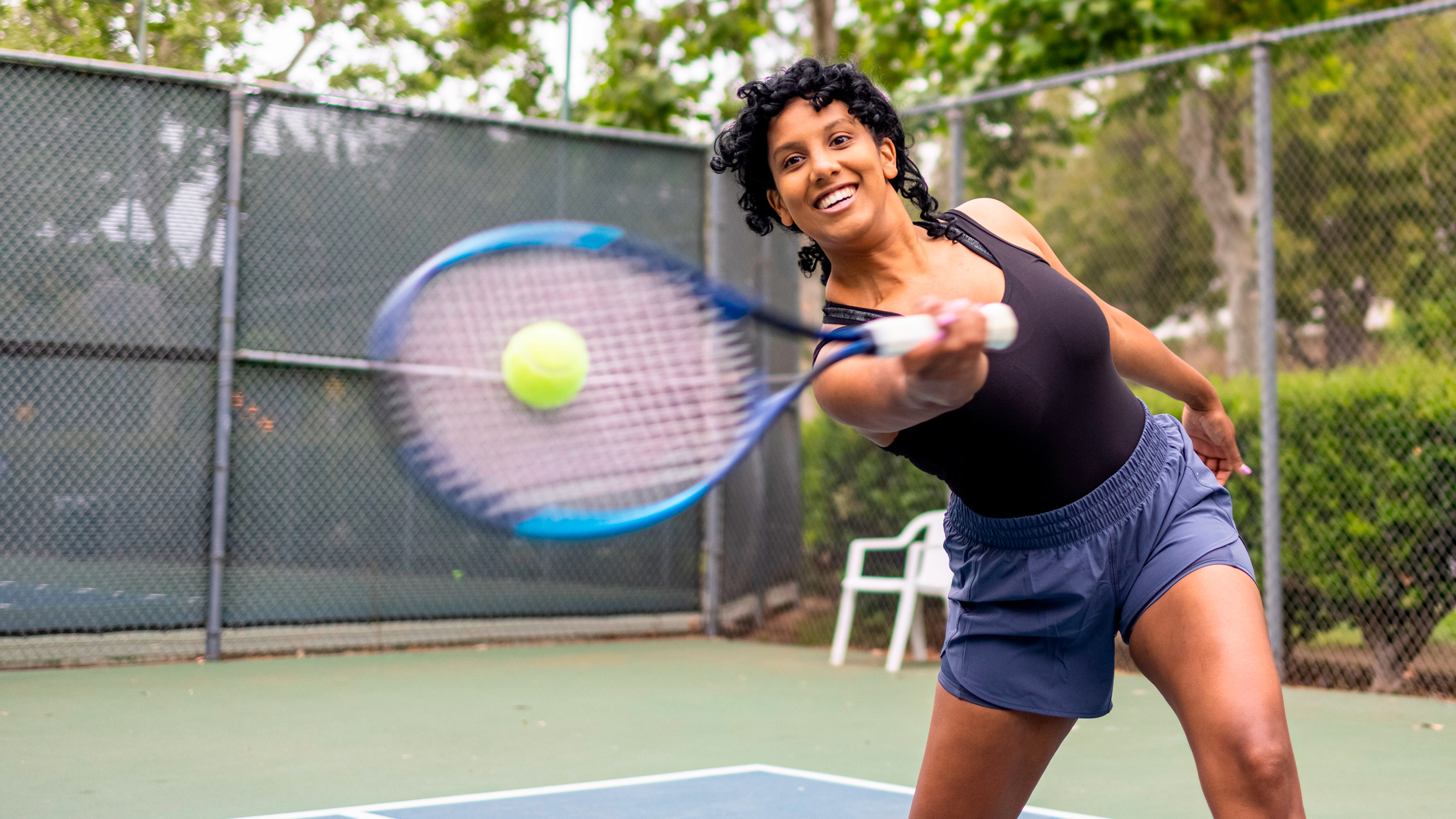 I thought sports weren't for me, until I realised they're a game-changer for ticking off cardio
I thought sports weren't for me, until I realised they're a game-changer for ticking off cardioI swapped HIIT and running for tennis—and I've never felt better
By Alice Porter Published